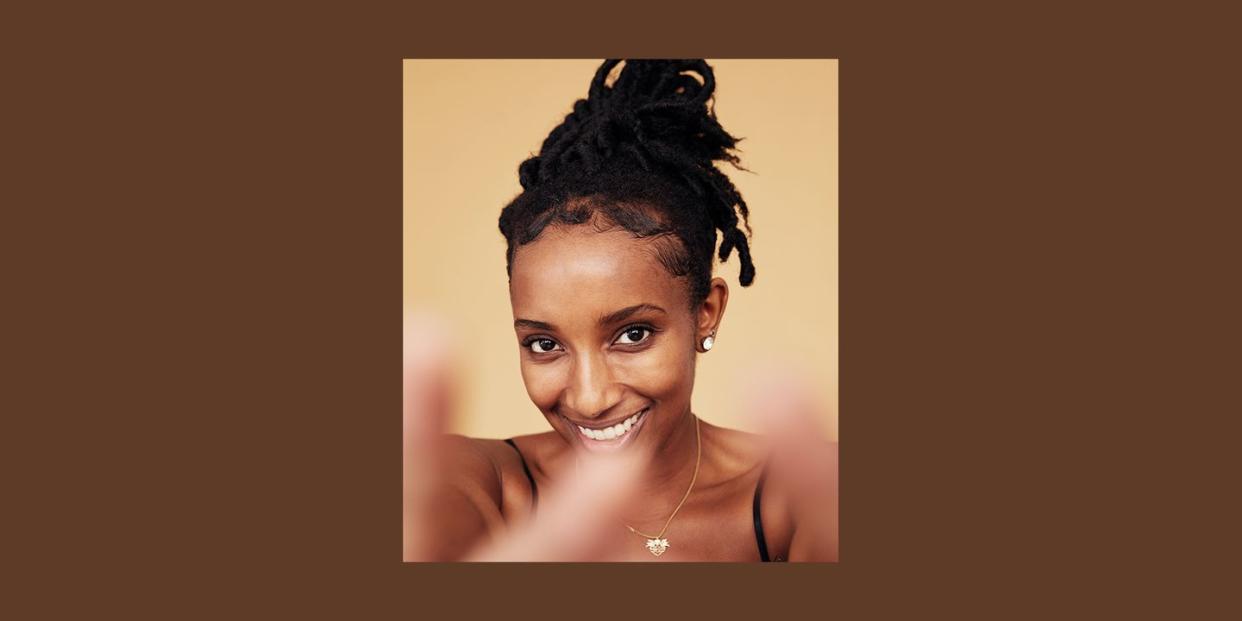Thinking About Getting Freeform Locs? Read This First

What if I told you there was a way for you to fully embrace your natural hair without spending tons of $$$ on products and bi-weekly salon appointments? Yup, that's an actual reality with freeform locs. Unlike traditional locs, you don’t have to stress about re-twisting your new growth, separating your roots, or layering on products with freeform locs. You just let your hair do its own thing—meaning it's legit possible for you to roll out of bed ready to go.
I'm not joking—freeform locs require pretty minimal effort to maintain. But just in case you don't believe me, I called for backup. I reached out to Dominique LyVar, senior stylist and educator at Devachan Salon, and Lulu Barnes, founder and CEO of Boho Locs, to give us the lowdown on all things freeform locs. Find out what you'll need in order to make this look a part of your natural hair journey, ahead.
What are freeform locs?
With traditional locs, your stylist will re-twist the new hair growth at the base of your locs about every six to eight weeks, says Pierre. This helps make sure that any new growth is the same size and pattern as your existing locs. But with freeform locs, LyVar says your dreads are formed organically. That means you don't have to manipulate your hair at all—you just allow the locs to live their best life and grow freely.
How do you get freeform locs?
Freeform locs can be started in one of three ways, says Pierre. You can either braid your hair, twist it with the palm-rolling method, or use a special interlocking tool (aka a styling tool that helps you create locs). Even though the interlocking tool is a longer process, according to Pierre, the method strengthens the base of the loc so it can support the weight of your hair as it grows. Need a visual? Peep the YouTube tutorial below.
How long does it take freeform locs to form?
This really depends on your hair type—if you have a tighter curl pattern, your locs will form more quickly than someone with a looser curl pattern. On average, Pierre says it can take about three to five weeks for your locs to form. Buuut it could take up to one or two years to see your locs fully form, so stay patient.
Want even more cool hair inspo? For endless protective style ideas and hair care tips, get Cosmo Unlocked.
Do you have to see a stylist to install freeform locs?
Nope, not if you don’t want to! A stylist can help install the initial braids or twists, says LyVar, and that might be a better option if your skillset is lacking in that area. As your hair grows, you can separate the small locs into different sections and sizes, says Pierre, but other than that, there’s not much you need to do to create the style.
How do you maintain freeform locs?
Freeform locs are wayyy low-maintenance. According to LyVar, you need to wash and condition your hair once or twice a week with a gentle, sulfate-free formula and then either let your locs air-dry or sit under a hooded dryer.
Scalp care is also super important because product buildup and oils can negatively impact hair growth, says Pierre. She recommends cleansing your scalp with apple cider vinegar because it’s great for cutting through buildup (thanks to its antibacterial and antifungal properties) without stripping your hair dry. Both experts suggest avoiding products with silicones—silicone buildup could make your hair even drier and more susceptible to breakage. So be sure to check the ingredients list before you put a product into your hair, k?
And when it comes to moisturizing your locs, Pierre likes to use water-based products, like a leave-in conditioning spray, to boost your hydration levels. Try to avoid oil-based formulas, since they have the potential to weigh down your hair, causing buildup to accumulate quicker.
Can freeform locs damage your hair?
With traditional locs, there's a chance for breakage if the locs are re-twisted too tightly, says Pierre. But since you're letting your hair do its own thing with freeform locs, there's little to no tension on your hair, meaning there's a v minimal chance for breakage. In fact, neither Pierre or LyVar have even heard of anyone getting damage from freeform locs.
The final verdict
Freeform locs are definitely worth trying out, especially if you’re looking for a protective style that’s actually low-maintenance. Plus, the hairstyle saves you so much time and money, while truly allowing you to embrace your natural hair’s authentic state. If this sounds like something you’d be into, I say that you should 100 percent go for it. And, hey, if you're still on the fence about getting locs, you can always road-test the look by trying out faux locs.
You Might Also Like

